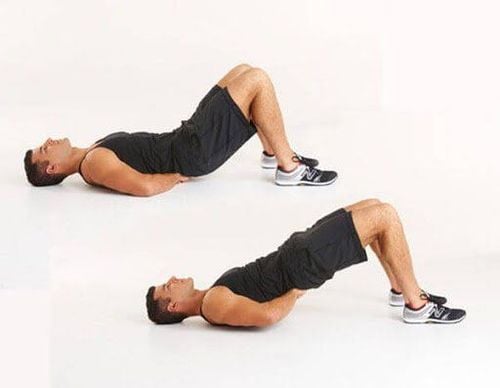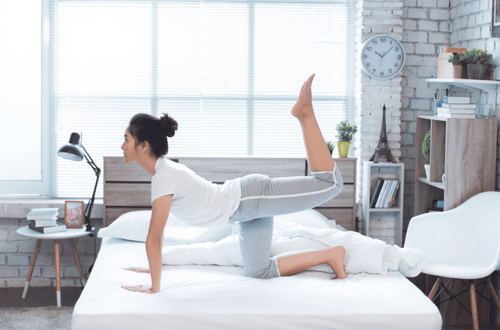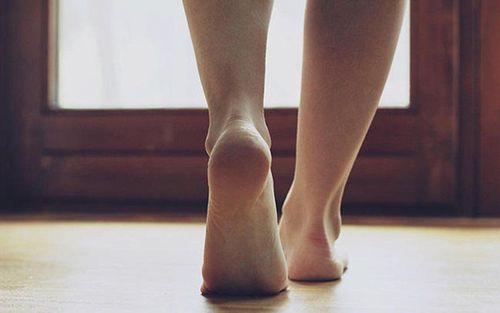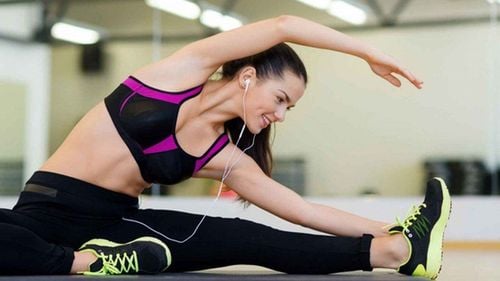This is an automatically translated article.
No matter how intense the squat is, the breathing pattern when doing the squat still needs to be paid attention to to stay safe and effective during the exercise.
1. How to breathe when squatting
Squat breathing is a 2-step process:
First, you have to breathe as deeply as possible and create pressure in the abdomen; Second, you have to work as hard as you can by extending the muscles in your torso to a 360-degree angle to create stiffness and strength. By using this technique, you can take the pressure off your spine, keep you safe, and give you the ability to lift more weight in the squat. Before performing a squat, synchronizing the order of breathing steps should be a top priority. The 2 steps of the squat breathing process can be called “2B” for short. The first "B" is "Breath", which means breath, the second "B" is "Brace", which means solidity.
Step 1: Take a deep belly breath
In the 2B system, the first B stands for “BREATHE”. First the athlete must take a big breath in with the abdomen, using the diaphragm. Our diaphragm is a dome-shaped muscle that separates the ribcage and abdominal cavity. Once you know how to breathe through your diaphragm, the next step is to stretch your abdomen as much as possible. Breathing in this way allows athletes to show strength and protect themselves by amplifying intra-abdominal pressure. Using diaphragmatic breathing creates a vacuum effect, pulling air into the lungs causing increased intra-abdominal pressure. The higher the pressure increases the stability of the torso, thereby protecting the spine as it does not move as much during the exercise. This is the goal of the squat process and we never want to create even minor damage to the spine. However, sometimes excessive intra-abdominal pressure can cause nosebleeds.
Step 2: “BRACE” and create as much tension as possible
In the 2B system, the second B stands for “BRACE”, which means firmness, referring to protecting yourself against a impending impact. Imagine someone is about to poke you in the stomach with a baseball bat or you're about to be tested in hockey. The natural tendency is to strain the body to protect itself. If you don't stretch properly, you can lose stability in the lower part of the squat.
Here's a simple exercise you can do:
Start by wrapping your arms around your waist with your thumbs on your lower back and fingers on the side and front of your stomach. From this position, gently put pressure on your abdomen with your hands, then start breathing. If we breathe through the diaphragm properly, we will feel a 360-degree expansion around the body. Apply the second B and feel the tension of the tissues increase. You should NOT feel your waist small so push out, not inhale. This can also be done with an elastic band and requires an exercise partner. Wrap the rope around your torso and pull it as directed. Then, the practitioner performs technique 2B, breathing and tightening. They will receive aesthetic feedback from their partner to confirm if they are doing it right. It is important to note that for optimal performance, both parts of the 2B system must be implemented correctly and in the proper order. If the process is done in reverse order and the athlete tenses before breathing, it will limit the amount of air inhaled. Not only does this reduce the effectiveness of the squat, but it can also cause spinal cord injuries.
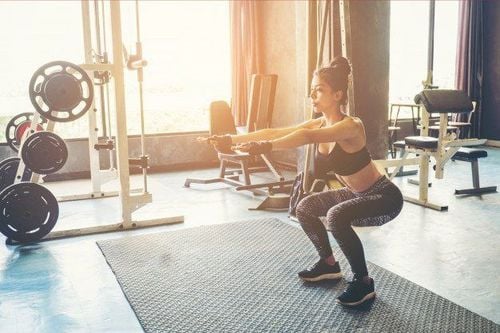
Cho dù thực hiện squat với cường độ như thế nào thì cách hít thở khi tập squat vẫn cần được chú ý
2. Do's and Don'ts when breathing during squats
If you follow the 2B synchronization pattern, the intra-abdominal pressure will increase first, then the stability of the spine will be created by tension. This keeps the spine in its natural position during the lift.
When the spine is not under load for a weightlifting squat, the spine will support the movement of the torso flexibly. However, after using the 'breathe' and 'stretching' techniques, the spine will turn into a fixed bar. As a result, the limbs around the spine can exert maximum strength.
It is important to understand that even if the spine turns into a fixed bar after performing 2B, it will still have a normal physiological curvature.
The goal of the squat is to maintain this normal curvature while performing the squat. How do we achieve this? By 'breathe' and 'stretching', then keep the hips down and the ribcage pulled down.
The "lower flanks" sign allows us to tighten even more after a breath, and it also prevents excessive stretching of the spine (back arching).
You may have seen people do squats by pushing their butts back and chests out like a bird. These postures will cause the spine to move out of its normal position under load. When the spine moves under load due to ineffective breathing and contraction, a number of conditions such as bulging discs, fractures or even looseness between joints can arise from overexertion during squats. Looseness of the joints or excessive movement in one segment (excessive movement) reduces the stability of the spine, reduces abdominal pressure, and makes you weaker and unable to increase exercise intensity to the highest level. .
3. Habit of stopping breathing when squatting
If you hold your breath while doing the squat, this is called a valsalva move. This phenomenon happens to everyone when we cough, sneeze, vomit or defecate. During squats, the same technique can be performed, which makes the 'breathe and stretch' technique amplified.
However, holding your breath can cause an excessive increase in intra-abdominal pressure, which can lead to a sudden increase in blood pressure. So if an athlete has high blood pressure, they should consider and consult a specialist before performing this technique.
Please dial HOTLINE for more information or register for an appointment HERE. Download MyVinmec app to make appointments faster and to manage your bookings easily.




